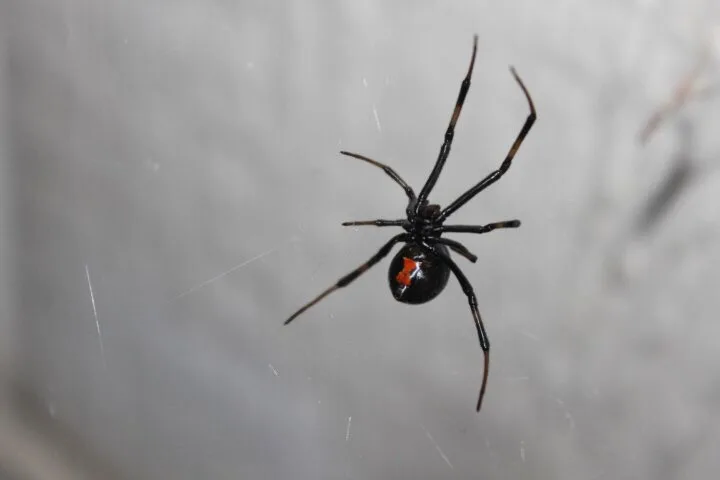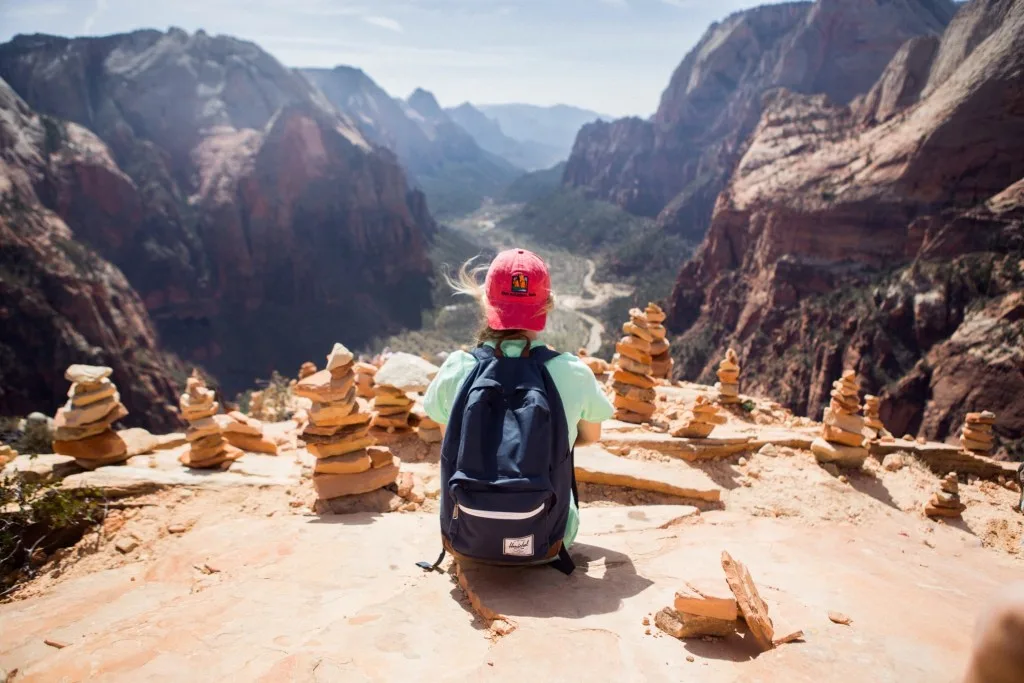These Are The Most Dangerous Creatures in Zion National Park
There are bound to be some dangerous creatures in Zion National Park.
In the 148,000 acres of this Utah park, you’ll find 78 species of mammals, 37 types of reptiles and amphibians, and eight kinds of fish. In addition, you’ll get the chance to view a whopping 291 different bird species.
What are the most dangerous animals among those? And what should you do if you encounter them?
Let’s dive in!
Most Dangerous Mammals in Zion
Mountain Lions
Mountain lions are rare and elusive in Zion. No attacks on humans have occurred, and their food supply is plentiful. Still, they do live there, so it’s good to learn safety.
The easiest way to escape injury is simply to avoid mountain lions. They’re most active around dawn and dusk, so try to avoid being out at those times. Also, they get very aggressive if they think you’re messing with their kill. If you see a dead animal, don’t get too close to it.
The worst thing you can do is run. Or anything else that might seem submissive. Instead, yell and clap your hands. Hold your clothing out to appear larger and more threatening.
If there’s a child with you, put them on our shoulders for safety, but don’t crouch down. Make eye contact and back up slowly while yelling.

Black Bears
The black bear is the state animal of Utah, and many of them live in Zion National Park.
Any kind of bear is scary, but the black bear isn’t likely to be a threat to you. They’re mainly herbivores and feast on plants and the occasional insects. Black bears are more prone to flight than fight. They get more aggressive if they’re hungry, but who doesn’t?
In areas like Yellowstone National Park, bears sometimes become dangerous because they’ve come to expect tourists to feed them.
It’s always good to carry bear repellent or pepper spray just in case. If you encounter a bear and don’t have repellent, try to stay calm and avoid sudden movements. If the bear stands, it’s just checking you out and isn’t necessarily about to attack.
Bears most often show up where there’s food, so carefully pack up any picnics or camping meals. Also, it’s best to leave your dog at home when there might be bears around.
Pro Tip: Unsure of when to visit Zion? We found The Best Time to Visit Zion National Park.
Elk, Deer, Desert Bighorn Sheep
You’ll find many elk, deer, and desert bighorn sheep in Zion. These hooved animals climb on the cliff sides in search of food and safety from predators.
They’re unlikely to attack people, though emotions run high during mating season, so be observant. Should one attack you, try to get away, hide behind a rock, or climb a tree.

Coyotes
There are coyotes in Zion National Park, but they mostly keep their distance from humans and aren’t very dangerous. Sometimes if people have food out, a coyote will approach, so make sure you stash your food in a safe space.
Much like mountain lions, you should never run from a coyote. Instead, yell and try to make yourself look bigger.
At dawn and dusk, coyotes “sing” to call their pack back together. While knowing they’re there can be frightening, listening to their songs is mesmerizing.
Raccoons, Skunks, and Squirrels
These small mammals present risks of their own. Obviously, skunks can spray humans or pets, and nobody wants that.
You can tell if a skunk is about to spray. They pound their front paws on the ground and raise their hind legs and tail. Back up slowly and quietly if you see that.
In addition, all these animals can carry rabies, so avoiding animals is the best practice. If an animal seems at all disoriented, that can be a warning sign along with classic symptoms like foaming at the mouth. Your best bet is to steer clear altogether, even if an animal looks like it might need help.
While raccoons and skunks are mostly nocturnal, don’t worry if you see them during the day. There are lots of good reasons they may be awake and foraging, so don’t assume they’re sick.
The extra risk with squirrels is that they interact with people, and people love to feed them. Squirrels have no table manners, though, and may end up biting or scratching. They can transmit rabies or other diseases this way as well as deliver a painful, annoying wound.
A wildlife biologist at Zion even considers squirrels the most dangerous creatures there because people feel it’s safe to interact with them. As cute as they are, squirrels are best left alone.

Most Dangerous Reptiles in Zion
Rattlesnakes
There are many snake species in Zion National Park, but the Great Basin Rattlesnake is the only venomous one. These snakes are light brown with darker brown blotches. Their colors can change slightly to better fit in with their surroundings, so be alert.
Also, you may not always be able to see the rattle (it can get cut off, or the snake could be too young for one), but they’re still quite dangerous.
This rattlesnake is acclimated to the desert, so they prefer dry, rocky areas. If it gets too hot for them, they become nocturnal.
Rattlesnake bites are quite rare. If you’re unfortunate enough to see one, try to calmly back away slowly.
Gila Monster
Gila monsters are slow lizards who mainly live underground. They’re the only poisonous lizard in North America, but their bite isn’t usually fatal. An outreach coordinator for Red Cliffs Preserves says the last Gila-related fatality was when a drunk cowboy got bitten on the nose in 1930.
For something called a monster, they’re kind of cute with their dark bodies and white markings. Still, keep your distance. If you see one, stay away, and keep kids and pets away too. If it hasn’t moved after a day, call local wildlife control.
The Gila monster is Utah’s state lizard.
Most Dangerous Insects in Zion
Spiders
There are many species of spiders in Zion National Park, but let’s focus on the two you’d be the most worried about.
The tarantula has a bad rep, but they don’t pose much of a threat. They’re nocturnal, and they go underground when it’s too hot, so you probably won’t see any. Like most wildlife, tarantulas won’t bother you unless you bother them. While they do bite if provoked, their venom isn’t considered toxic to humans.
Their bite does subdue their prey (primarily insects) and make it easier to digest. A tarantula can live on a single cricket for weeks.
The black widow also gets an unfair shake. These spiders are the most venomous in North America, but they don’t deliver venom with every bite. You should still seek medical treatment if one bites you, but those bites are rare.

Bees
There are Africanized, or killer, bees living in Zion National Park. Just like regular honey bees, Africanized bees build hives in trees or rocks. With any bee, if they feel threatened by you, such as if you get close to the hive, they may swarm you.
If you’re climbing, watch where you put your hands. Have a dog? Keep Fido close so they don’t disturb a nest and bring the bees back to you and your family. Check your campsite for hives before settling in. And, if you see a nest or swarm where a lot of people might be (such as bathrooms and garbage bins), advise the park rangers.
If you see a swarm, run – and run fast – to a place where you can shelter from them and tell others to do the same. Pull your shirt up over your head for protection. Jumping in the water won’t usually help because they’ll often wait for you to surface.
If you get stung, remove any stingers by scraping them out once you’re safe. Seek medical help if you get stung more than 15 times, or the sites are especially red, itchy, or painful.
Pro Tip: Ready to explore Zion? We put together The Zion National Park Road Trip Guide.
Mosquitoes
No one is happy to see mosquitoes anytime! They can bite and give you an itchy welt without you even knowing it. They can also be a carrier for more severe illnesses like West Nile Virus.
Fortunately, bug spray is very effective at encouraging mosquitoes to keep their distance.

The Most Dangerous Creature in Zion National Park
Ultimately, you are the biggest risk to your safety in Zion National Park. It’s rated one of the most dangerous national parks in the country. Every year, people lose their lives to falls, drowning, and other accidents.
The terrain of the park makes accidents more likely, with unexpected dropoffs and treacherous cliffs.
While you’re in Zion, be aware of where you’re putting your hands and feet, especially near cliff edges. Drink plenty of water and wear safety gear when climbing or rafting and boating. Use common sense, and you’re more likely to have an incredible experience.
Zion’s Dangerous Creatures Aren’t All Bad
In Zion National Park, you might see a range of wildlife. From spiders to snakes, you may feel frightened to visit.
Attacks are rare, though, and even some of the most feared species aren’t as bad as their reputation. You can learn survival skills for most animals, but you mostly need to keep yourself alert and careful.
Have you run across a dangerous creature in Zion National Park?
Discover the Best Free Camping Across the USA
To be honest with you, we hate paying for camping. There are so many free campsites in America (with complete privacy).
You should give it a try!
As a matter of fact, these free campsites are yours. Every time you pay federal taxes, you’re contributing to these lands.
Become a FREE CAMPING INSIDER and join the 100,000 campers who love to score the best site!
We’ll send you the 50 Best Free Campsites in the USA (one per state). Access the list by submitting your email below: